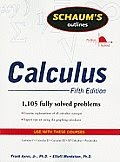1) Physical Barriers
2) Psychological Barriers
Psychological barrier is further divided in following forms:
1) Semantic
2) Cultural
3) Limited experience
4) Rumor
5) Blind imitation
These types are defined as;
PHYSICAL BARRIERS:
It is a type of barrier in which the message doesn’t reach the destination. These barriers are literacy for printed material of messages, absence of electricity, Non-Availability of television or radio. Sometimes there’s a channel noise interfering with the fidelity of the physical transmission of an intended message.
PSYCHOLOGICAL BARRIERS:
It is the type of the barrier in which the message does reach the destination but its meaning is misunderstood or misinterpreted. In one of these cases there are some psychological barriers between source and destination.
Semantic:
By semantic we mean the historical and psychological study and classification of changes in the significance of words or forms viewed as factors in linguistic development.
Cultural:
The culture barrier plays a very vital role in marring the process of communication. In case a message, attitude or behavior is encoded in a peculiar medium of is highly possible to be misunderstood when decoded after it reach the destination, which doesn’t share the same medium of culture.
Limited Experience:
Limited experience on the part of the source or the receiver results in the absences of providing desired effects and effective communication. This phenomenon is visible and is observed in the cultural gap between rural and urban people.
Rumor:
Literally rumor means talk or opinion widely disseminated with no source or statement. Rumor has been described as a powerful barrier in a prospective process of communication.
Blind Imitation:
Human beings are psychologically conditions by certain habits, prejudices and stereo type thinking which hinders the way of thinking.

























